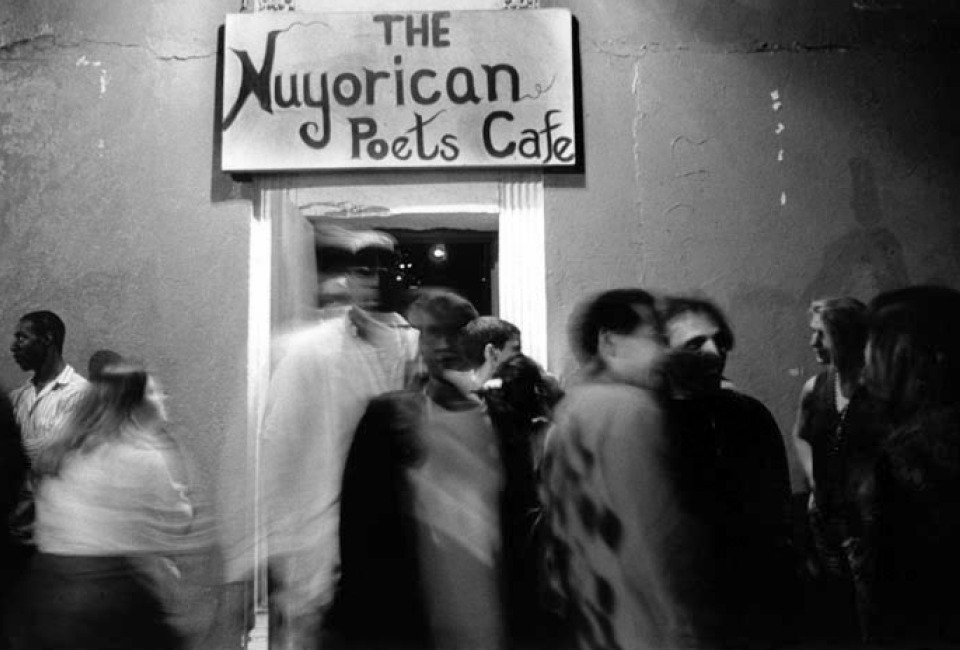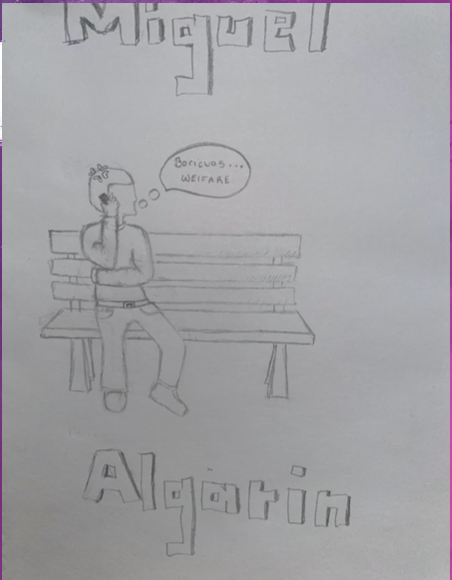Group #1 blog: Mariel Hernandez, Diamond Renderos, Marisela Zempoalteca, and Michelle Solano Diaz
Background Information *Who was Miguel Algarin?* Presented by Marisela Z

- Algarin was born in Puerto Rico and became a poet
- He moved to the Lower Eastside of Manhattan and even opened up the Nuyorican Poets Cafe. He wanted a place which provided space for poetry and performances
- He also taught at New York University and also Brooklyn College and shortly became chair of the Puerto Rican Studies Department at Rutgers.
Commentary * What was Miguel Algarin’s poem about?* Presented by Mariel H. and Diamond R.
We were given two poems by Miguel Algarin. One poem is called Survival and the other is A Mongo Affair. The first, Algarin repeats the words “ I was” to prove that he was born and taught everything he knows. He the switches his words last seconds and repeats the phrase “I will not” to demonstrate that he has strength and is able to do what he wants for himself without no one teaching him. This is powerful because he is stating that we don’t need anyone to learn what we want to learn. The next poem begins with a “boricua”asking if some men are stable because they have government help. However, Algarin quickly informs the man he is being mislead because government help hurts the Puerto Rican pride. They’re weak due to the fact the man can support his family by himself. Algarin then continues to explain it is that same men who “cleans, h in weeps, [and] crawls.” These are the same men that work hard for everything they have. Algarin then finishes by explain that we shouldn’t believe the ideas about the cities are the places where we can make dreams come true because most of the time we will be there to “face bullets, bombs, [and] missiles.” The message Miguel Algarin is conveying through this poem is Puerto Rican’s sense of pride and hard work is being taken away from government assistance. Though this life is better than living in Puerto Rico at the time, He is showing Puerto Rican’s have no sense of purpose anymore in America.
Video * How do Puerto Rican’s under government assistance live in New York?* presented by Diamond R.




In Miguel Algarin poem “ Mongo affair” the first few lines talks about Puerto Ricans in New York living nice “they tell me they get money
and medical aid,that their rent is paid,that their clothes get bought
that their teeth get fixed”to which the narrator shows it is in fact a lie. The narrator explains how not only does government assistance make the Puerto Ricans weak, but it diminishes them and doesn’t actually help them. In this documentary which is 6 parts, called “ A Nuyorican Dream” it tells the story of a Nuyorican family living in poverty. The mother fled from Puerto Rico to New York along with others in the Puerto Rican Migration in hopes to find a better living for her and her child. Fast forward the eldest son, Robert who made his way to college, shows how his family who grew up with government assistance such as welfare turned out. He explains how he grew up in a 2 bedroom apartment with his mom, stepdad, 3 sisters Betty, tati, and Milly, as well as his little brother Danny.He shows the struggle his family had with drugs, poverty, bad decisions and prison. To support her family the mother has to sell Pasteles, a Puerto Rican delicacy. He shows how the American dream is actually hard especially for minorities like Puerto Ricans. He shows how his sister Betty struggled with drug abuse to which she doesn’t have custody of her kids, Tati who also struggles with drug abuse but is making process. Danny h has been in out of prison due to assault and drug possessions and lastly Milly who is trying to not follow her sibling’s steps. Robert shows the struggle his family is going through, however, with that he also shows the love each member has for each oher, especially the mother. My favorite part of this film is when he flies to Florida to se his sister Tati, and Tati is opening up the presents from her mother to which Robert says “ I don’t know how mami does it, I was tinking and I was like ‘mami is so poor, but somehow she comes through with everyone’s gifts’”. This is my favorite part due to the fcat it shows Puerto Ricans are resilient and can still live their life through any circumstances. This was also my favorite part due to the fact i relate so much. Growing up in a Latino home and Puerto Rican, my family wasn’t wealthy, we had government assistance. However whenever I or my brother needed something my family made sure we got it. Though we had money problems my family made sure it never affected me or my sibling.
Poem * How does Miguel Algarin inspire us?* presented by Mariel H.
“on the corner by the entrance to González-Padín
I have to admit that he has been
lied to, misled,
that I know that all the goodies
he named humiliate the receiver,
that a man is demoralized
when his woman and children
beg for weekly checks”
This quote is from A Mongo Affair by Miguel Algarin and before this quote is stated he talks about the way a Puertarican man relies on the government. This quote proceeds to explain that all the “goodies,” meaning all the help he receives embarresses him and this is because he his wife and children “beg for weekly checks.” This demonstrates that men who ask for help constantly are not seen as men.
He and them by Mariel Hernandez
He questions why he can’t cry,
Later told that he’ll be a fly,
Small and weak,
He looks at them,
The other men,
“I have to be like them,”
Yet he feels that he can’t.
He looks at them,
The other men,
And sees strength, resilience.
In him he sees nothing.
“Is this what I am? Weak?”
“No I am NOT”
He is a Man just like Them.
Drawing Presented by Michelle S.

I used the poem called Mongo Affair, a person confesses about his annoyance for Puerto Rican women. Algarin belittles women who use welfare for their needs which is false. I drew a male who is talking on the phone and talking about “Boricuas” aka Puerto Rican women wand also including welfare in their thoughts.

